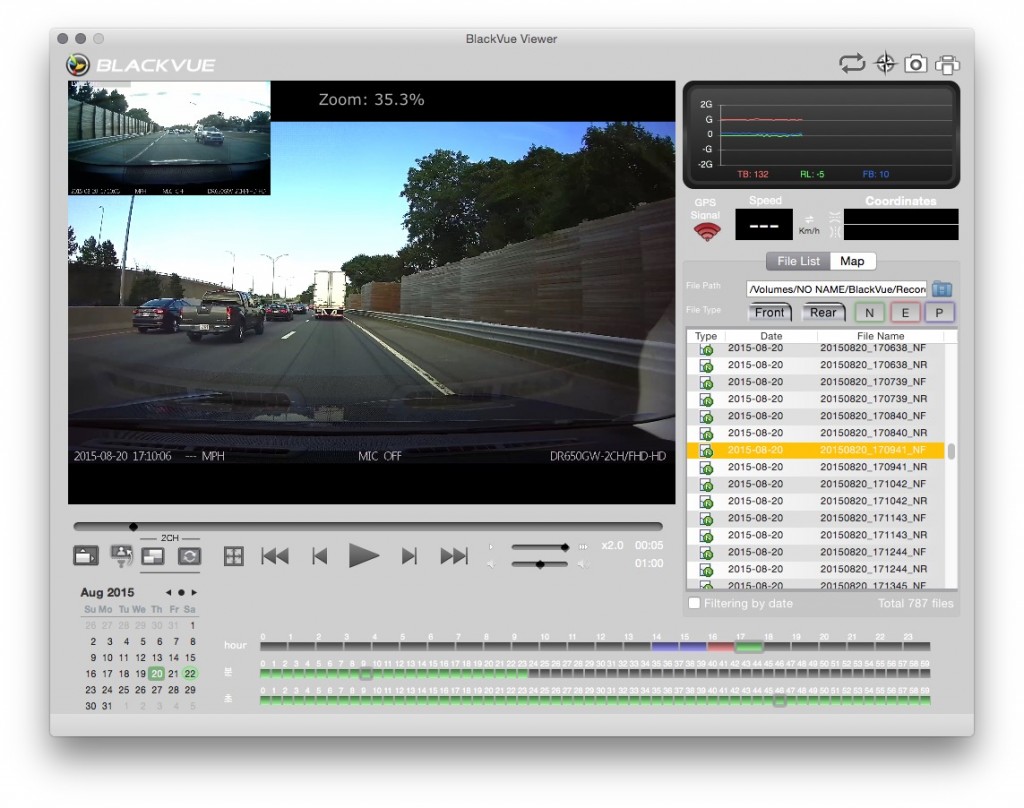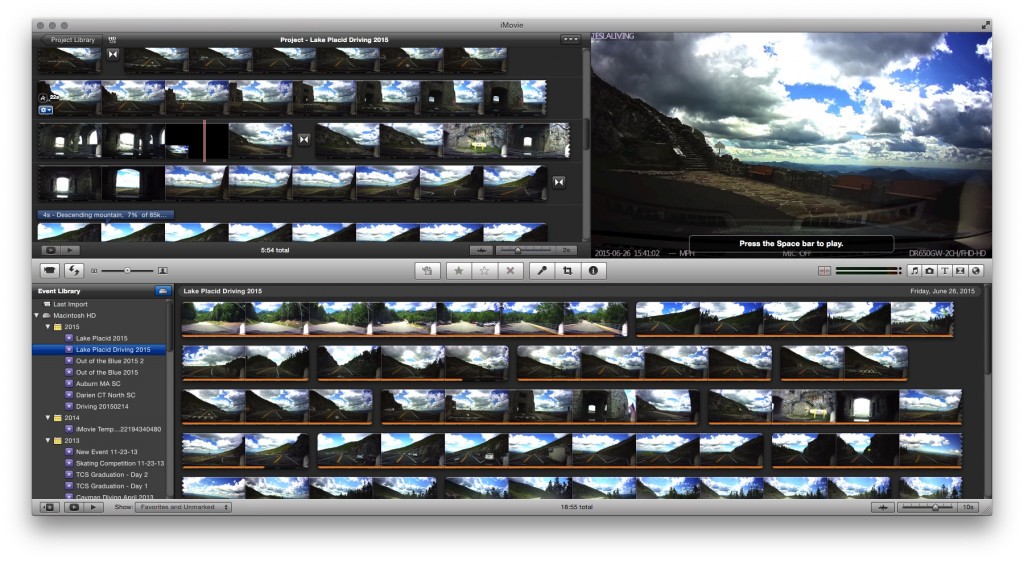Tesla Model S
Life With a Dash Cam in Your Tesla Model S
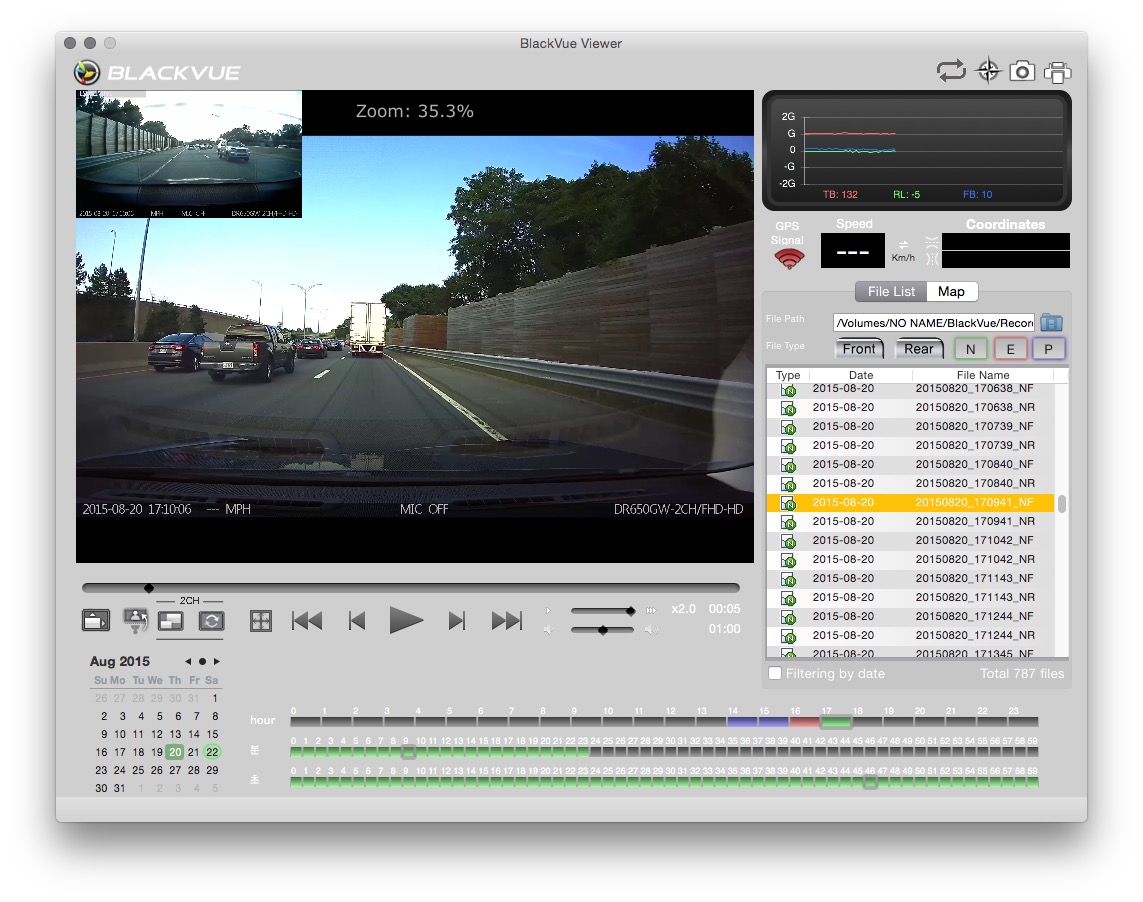
A while ago I wrote about reasons for installing a dash cam in your Model S and then followed up with instructions on how to install one yourself. This post will discuss the basics of how I use the dash cam in my everyday life.
Capturing the moment
Whether you have a permanent 12V supply to your dash cam or switched power, you will want to preserve interesting moments soon after they happen such as this encounter I had with deer in NJ.
Most dash cams will recycle space on the memory cards leaving you with just enough space beofore it gets overwritten. A 32GB card will generally capture a day’s worth of video during a “normal” day. I say normal because the depending on how you configure the BlackVue dash cam – whether it’s set to turn on automatically through its motion and sound sensing capabilities – the amount of recording time can vary depending on what takes place during idle time.
Memory Cards
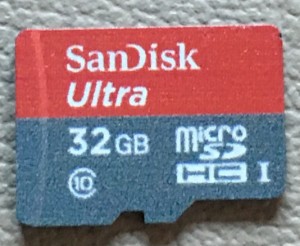 You’ll want to have a second memory card for your dash cam and keep that handy within the car. Make sure that it is formatted for your dash cam. The easiest way to set up a new card if you still have an old one is to copy the old card to the new card. Another option is to make a backup to your computer. Either way, I recommend testing the new card before using it.
You’ll want to have a second memory card for your dash cam and keep that handy within the car. Make sure that it is formatted for your dash cam. The easiest way to set up a new card if you still have an old one is to copy the old card to the new card. Another option is to make a backup to your computer. Either way, I recommend testing the new card before using it.
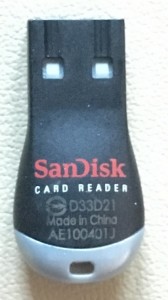
The micro SD card that the BlackVue uses is extremely tiny and can easily be lost if not careful. To prevent from losing my back up memory card, I’ll have it inserted into the card reader that comes with the card and plugged into the one of the USB ports in my Model S.
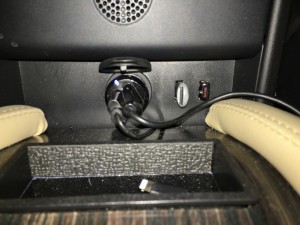
Capturing the moment
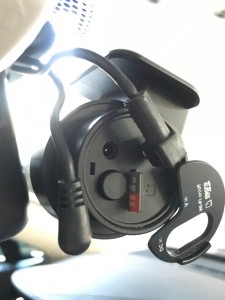 Once something interesting is caught on dash cam, the process over downloading it is fairly simple. You’ll have many hours of video that can be captured before your special moment is overwritten but it helps to remember the time the event happened. A good time to do a swap is at a Supercharger stop or when you reach a particular destination. The memory is small and fiddling with it while the car is moving isn’t very safe.
Once something interesting is caught on dash cam, the process over downloading it is fairly simple. You’ll have many hours of video that can be captured before your special moment is overwritten but it helps to remember the time the event happened. A good time to do a swap is at a Supercharger stop or when you reach a particular destination. The memory is small and fiddling with it while the car is moving isn’t very safe.
First power down your dash cam by unplugging the power cord. Wait about 15 seconds for it to finish powering down then flip open the little door protecting the memory before popping it out by pressing down on the memory card.
Swap the card with the spare memory card that’s temporarily inserted in the Model S USB slot and power back up your camera.
Downloading Video
Once I’m off the road and near a computer, I take the card reader containing my media and plug it into the computer’s ESB port. If I don’t have time to process and view the videos, I simply copy all videos under the “Record” folder from the memory card to a location on disk that I can access later.
The best way to find the video footage you want is to use your dash cam’s software. The BlackVue viewer also serves as a means for changing camera settings. Select preferences from the file menu when your memory card is loaded.
Click the folder icon on the right of the screen and browse to the proper media source to get started.
Pick an event time that is just before the moment you want to preserve and double click to start playing. I typically use the speed selector and play the video at max speed as most of the footage will likely be monotonous. Each video clip defaults to being a minute long. As you click through each video segment, find the ones that are interesting to you and drop them into a video editor as a way to add some movie magic to them. On OS X that’s iMovie.
Editing Video
Using iMovie, I select File, Import Movies and create a new event to put the clips into. From here you use iMovie to trim, add titles, speed things up etc:
I typically upload my edited video to YouTube as a way to share interesting moments with my buddies.
Once all is said and done with the USB card reader, be sure to insert it back into the Model S USB port as backup to the primary card that’s running on the dash cam.
Summary
Capturing great vacation moments or events from your favorite Tesla Superchargers is simple with a dash cam.
While the instruction manual recommends periodic reformatting of cards, I find that completely unnecessary. I have a low maintenance car and fortunately the cameras are low maintenance too!
Check out my dash cam videos on YouTube to get a perspective on the quality taken by the BlackVue. Feel free to share your best dash cam moments by leaving a link in the comments below!

News
Tesla shocks with latest Robotaxi testing move
Why Tesla has chosen to use a couple of Model S units must have a reason; the company is calculated in its engineering and data collection efforts, so this is definitely more than “we just felt like giving our drivers a change of scenery.”

Tesla Model S vehicles were spotted performing validation testing with LiDAR rigs in California today, a pretty big switch-up compared to what we are used to seeing on the roads.
Tesla utilizes the Model Y crossover for its Robotaxi fleet. It is adequately sized, the most popular vehicle in its lineup, and is suitable for a wide variety of applications. It provides enough luxury for a single rider, but enough room for several passengers, if needed.
However, the testing has seemingly expanded to one of Tesla’s premium flagship offerings, as the Model S was spotted with the validation equipment that is seen entirely with Model Y vehicles. We have written several articles on Robotaxi testing mules being spotted across the United States, but this is a first:
🚨 Tesla is using Model S vehicles fitted with LiDAR rigs to validate FSD and Robotaxi, differing from the Model Ys that it uses typically
Those Model Y vehicles have been on the East Coast for some time. These Model S cars were spotted in California https://t.co/CN9Bw5Wma8 pic.twitter.com/UE55hx5mdd
— TESLARATI (@Teslarati) December 11, 2025
Why Tesla has chosen to use a couple of Model S units must have a reason; the company is calculated in its engineering and data collection efforts, so this is definitely more than “we just felt like giving our drivers a change of scenery.”
It seems to hint that Tesla could add a premium, more luxury offering to its Robotaxi platform eventually. Think about it: Uber has Uber Black, Lyft has Lyft Black. These vehicles and services are associated with a more premium cost as they combine luxury models with more catered transportation options.
Tesla could be testing the waters here, and it could be thinking of adding the Model S to its fleet of ride-hailing vehicles.
Reluctant to remove the Model S from its production plans completely despite its low volume contributions to the overall mission of transitioning the world to sustainable energy, the flagship sedan has always meant something. CEO Elon Musk referred to it, along with its sibling Model X, as continuing on production lines due to “sentimental reasons.”
However, its purpose might have been expanded to justify keeping it around, and why not? It is a cozy, premium offering, and it would be great for those who want a little more luxury and are willing to pay a few extra dollars.
Of course, none of this is even close to confirmed. However, it is reasonable to speculate that the Model S could be a potential addition to the Robotaxi fleet. It’s capable of all the same things the Model Y is, but with more luxuriousness, and it could be the perfect addition to the futuristic fleet.
News
Tesla Model S makes TIME’s list of Best Inventions
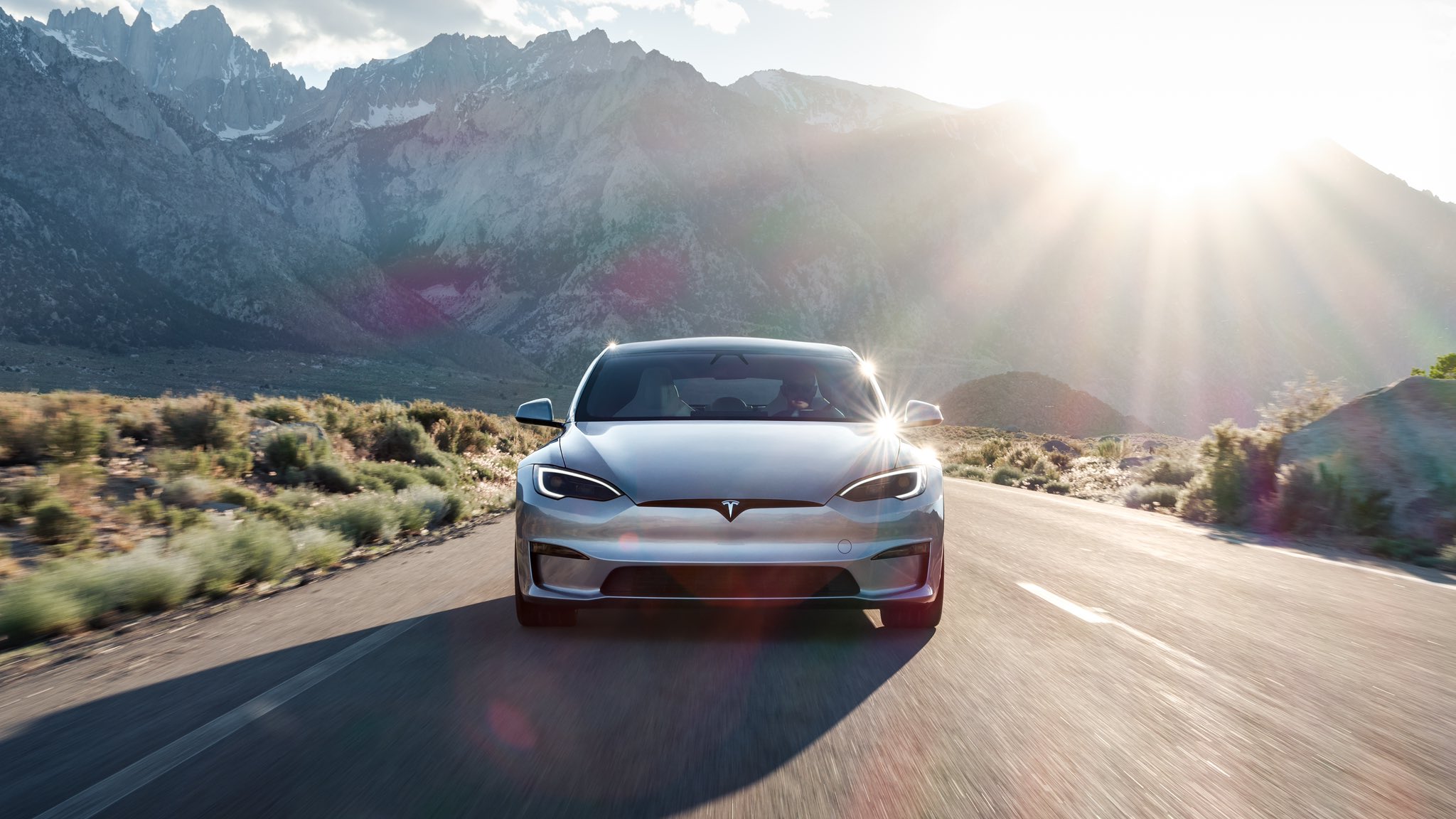
Tesla’s flagship sedan, the Model S, has officially been named one of TIME Magazine’s Best Inventions of the 2000s. It joins its sibling, the Model 3, which made the list in 2017.
The Model S is among the most crucial developments in the automotive industry in the last century.
Just as the Ford Model T made its mark on passenger transportation, becoming the first combustion engine vehicle to be successfully developed and marketed at a time when horse and buggy were the preferred mode of transportation, the Model S revolutionized things a step further.
Although it was not the first EV to be developed, the Tesla Model S was the EV that put EVs on the map. In 2012, TIME recognized the Model S as a piece of technology that could truly transform the car industry.
The publication wrote:
“This electric four-door sedan has the lines of a Jaguar, the ability to zip for 265 miles (426 km) on one charge—that’s the equivalent of 89 m.p.g. (2.6 L/100 km)—and touchscreen controls for everything from GPS navigation to adjusting the suspension.”
Looking back, TIME was right on. The Tesla Model S was truly a marvel for its time, and it, along with the OG 2008 Roadster, can be seen as the first two EVs to push electrification to the mainstream.
As TIME described this year, the Model S “proved to be a game-changing experience for electric vehicles,” and it ended up truly catalyzing things for not only the industry, but Tesla as well.
The Model S acted as a fundraiser of sorts for future vehicles, just as the Model X did. They paved the way for the Model 3 and Model Y to be developed and offered by Tesla at a price point that was more acceptable and accessible to the masses.
The Current State of the Tesla Model S
The Model S contributes to a very small percentage of Tesla sales. The company groups the Model S with the Model X and Cybertruck in its quarterly releases.
Last year, that grouping sold 85,133 total units, a small percentage of the 1.789 million cars it delivered to customers in 2024.
Things looked to be changing for the Model S and the Model X this year, as Tesla teased some improvements to the two cars with a refresh. However, it was very underwhelming and only included very minor changes.
Lucid CEO shades Tesla Model S: “Nothing has changed in 12 years now”
It appeared as if Tesla was planning to sunset the two cars, and while it has not taken that stance yet, it seems more likely that the company will begin taking any potential options to heart.
CEO Elon Musk said a few years ago that the two cars were only produced due to “sentimental reasons.”
Lifestyle
Tesla Model S Plaid battles China’s 1500 hp monster Nurburgring monster, with surprising results
There is just something about Tesla’s tuning and refinement that makes raw specs seem not as game-changing.

The Tesla Model S Plaid has been around for some time. Today, it is no longer the world’s quickest four-door electric sedan, nor is it the most powerful. As per a recent video from motoring YouTube channel Carwow, however, it seems like the Model S Plaid is still more than a match for some of its newer and more powerful rivals.
The monster from China
The Xiaomi SU7 Ultra is nothing short of a monster. Just like the Model S Plaid, it features three motors. It also has 1,548 hp and 1,770 Nm of torque. It’s All Wheel Drive and weighs a hefty 2,360 kg. The vehicle, which costs just about the equivalent of £55,000, has been recorded setting an insane 7:04.957 at the Nurburgring, surpassing the previous record held by the Porsche Taycan Turbo GT.
For all intents and purposes, the Model S Plaid looked outgunned in Carwow’s test. The Model S Plaid is no slouch with its three motors that produce 1,020 hp and 1,420 Nm of torque. It’s also a bit lighter at 2,190 kg despite its larger size. However, as the Carwow host pointed out, the Model S Plaid holds a 7:25.231 record in the Nurburgring. Compared to the Xiaomi SU7 Ultra’s record, the Model S Plaid’s lap time is notably slower.
Real-world tests
As could be seen in Carwow’s drag races, however, Tesla’s tech wizardry with the Model S Plaid is still hard to beat. The two vehicles competed in nine races, and the older Model S Plaid actually beat its newer, more powerful counterpart from China several times. At one point in the race, the Xiaomi SU7 Ultra hit its power limit due to its battery’s temperature, but the Model S Plaid was still going strong.
The Model S Plaid was first teased five years ago, in September 2020 during Tesla’s Battery Day. Since then, cars like the Lucid Air Sapphire and the Xiaomi SU7 Ultra have been released, surpassing its specs. But just like the Model Y ended up being the better all-rounder compared to the BYD Sealion 7 and the MG IM6, there is just something about Tesla’s tuning and refinement that makes raw specs seem not as game-changing.
Check out Carwow’s Model S Plaid vs Xiaomi SU7 drag race video below.
